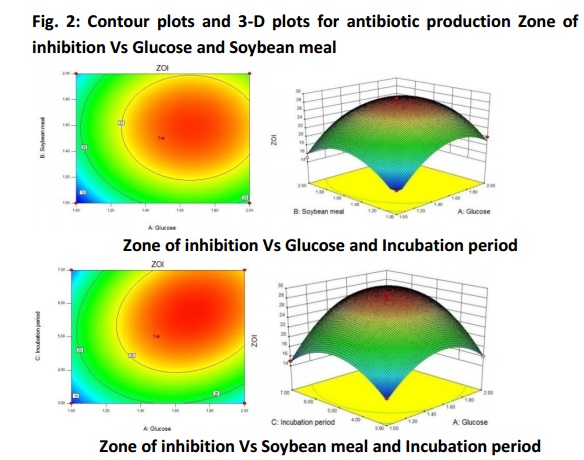Chapter: Basic Concept of Biotechnology : Antibiotics: Microbial Sources, Production and Optimization
Optimization of fermentation conditions
Optimization of fermentation conditions
It is important to improve the performance of the systems and to increase the yield of the process without increasing the cost. The method used for this purpose is called optimization. There is a parameter change in the general practice of determining the optimal operating conditions while keeping the others at a constant level. This is called one-variable-at-a-time technique. The major disadvantage of this technique is that it does not depict the complete effects of the parameters on the process. In order to overcome this problem, optimization studies can be carried out using response surface methodology (RSM). To make the production of antibiotics feasible, it is necessary to optimize the production conditions. In statistical based approaches, response surface methodology (RSM) has been extensively used in fermentation media optimization (Dutta et al., 2004; Xionget al., 2004).
1. Plackett- Burman (PB) experimental design
The purpose of the first step in the optimization strategy was to identify the medium components that have significant effect on the antibiotic production. Plackett–Burman designs are experimentaldesigns presented in 1946 by Robin L. Plackett and J. P. Burman while working in the BritishMinistry of Supply. Their goal was to find experimental designs for investigating the dependence of some measured quantity on a number ofindependent variables (factors), each taking L levels, in such a way as to minimize the variance of the estimates of these dependencies using a limited number of experiments. Interactions between the factors were considered negligible. The solution to this problem is to find an experimentaldesign where each combination of levels for any pair of factors appears the same number of times, throughout all the experimental runs. A complete factorial design would satisfy this criterion, but the idea was to find smaller designs. The PB design was based on the first-order model with no interaction among the factors.
2. Response Surface Methodology (RSM)
RSM has been very popular for optimization studies in recent years. It is clear that RSM has been widely applicable for different purposes in chemical and biochemical processes. RSM consists of a group of mathematical and statistical techniques that can be used to define the relationships between the response and the independent variables. RSM defines the effect of the independent variables, alone or in combination, on the processes. In addition to analyzing the effects of the independent variables, this experimental methodology also generates a mathematical model. The graphical perspective of the mathematical model has led to the term Response Surface Methodology (Myers and Montgomery, 1995; Anjumet al., 1997).
Response surface designs are commonly used to explore nonlinear relationships between independent (medium components) and the dependent (antimicrobial activity) variables (Rosenthal et al., 2001). Some computer packages offer optimal designs based on the special criteria and input from the user. These designs differ from one other with respect to their selection of experimental points, number of runs and blocks. After selection of the design, the model equation is defined and coefficients of the model equation are predicted. The visualization of the predicted model equation can be obtained by the response surface plot and contour plot. Ranjith Kumar et al. (2014a) reported that the Box-


Behnken design was conducted in the optimum vicinity to locate the optimum concentration of Soybean meal, Glucose and Incubation period for maximum antibiotic production. These suggested that theconcentration of glucose and incubation period have a direct effect on antibiotic activity and hence yield. All of the above consideration indicated an excellent adequacy of the regression model (Fig. 2). This report proves that the production of antibiotic as secondary metabolites is profoundly influenced by the kind and quality of nutritional elements available and environmental factors.
Related Topics